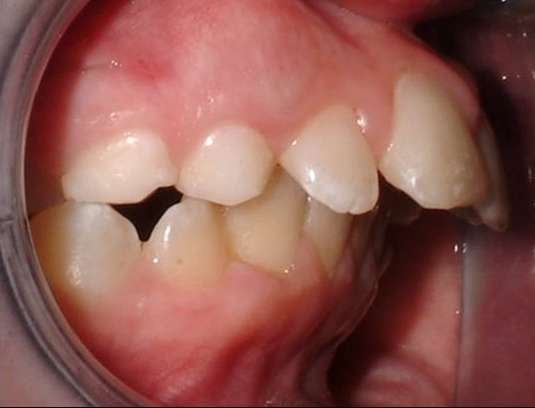


At Milberg Orthodontics, we understand that each person seeks orthodontic treatment for their own individual needs. Whether the reason for treatment is the esthetics or function or your bite, here are some of the most common problems we see in our adult patients:
Crowding of the teeth occurs when there is not enough space for the teeth to fit normally within the dental arches, which can cause some teeth to rotate or be displaced. Sometimes the teeth are too large for the available space or there is a disharmony in the tooth-jaw relationship.

Spacing in the teeth is the opposite of crowding where there is an excess of space in the dental arch, resulting in gaps between the teeth. This can occur when the teeth are smaller than the space available, or if there are missing teeth.

Overjet, or the horizontal distance between the upper and lower front teeth, occurs when the lower teeth are too far behind the upper front teeth or the upper teeth are too far ahead of the lower teeth. This often results in dental protrusion.

An underbite occurs when the lower front teeth are ahead of the upper front teeth, which is opposite of protruding teeth. This particular patient had jaw discomfort and wear from the relationship of the upper and lower teeth.

An open bite can occur in the front of the teeth or the back teeth. As seen here, this patient has an open bite in the front, where the teeth do not touch even when the mouth is closed. This is commonly seen in conjunction with patient’s who sucked their thumb as young children.

A deep bite is the opposite of an open bite, where the top teeth cover the bottom teeth too drastically. Often times, the imprint of the lower teeth can be seen in the palatal tissue.

Missing teeth can be a genetic or congenital absence of one or more permanent teeth, most commonly a wisdom tooth or lateral incisor. This patient here was not congenitally missing teeth but had teeth extracted earlier in life. With orthodontic treatment, we are creating the ideal space for implants to be placed and the missing teeth to be restored.


The American Association of Orthodontists recommends all children see an orthodontist by the age of 7. If your child is older than 7, it’s certainly not too late for a check-up. Because patients differ in both physiological development and treatment needs, each patient’s appropriate treatment time may vary.
Below, you will see some of the most commonly treated orthodontic conditions in children:
This patient has two teeth in the front which are in crossbite, meaning the lower teeth cover the upper teeth. This can be easily corrected with a retainer or limited braces.

A crossbite of the back teeth occurs when the lower teeth are on the outside of the upper teeth, instead of the upper teeth covering the lower teeth (note the right versus the left side). A palatal expander is commonly placed to correct the unilateral crossbite.

An underbite occurs when all of the lower front teeth cover the upper front teeth, instead of the upper front teeth extending ahead of the lower front teeth. An underbite can occur when the upper jaw is behind the lower jaw, or the lower jaw is too far ahead of the upper jaw.

Dental protrusion is seen when the lower teeth are too far behind the upper front teeth or the upper teeth are too far ahead of the lower teeth. Commonly this occurs in children who’s lower jaw is behind the upper jaw.

Crowding of the teeth occurs when there is not enough space for the teeth to fit normally within the dental arches, which can cause some teeth to rotate or be displaced. Sometimes the teeth are too large for the available space or there is a disharmony in the tooth-jaw relationship.

Spacing in the teeth is the opposite of crowding, where there is an excess of space in the dental arch, resulting in gaps between the teeth. This can occur when the teeth are smaller than the space available, or if there are missing teeth.

An open bite can occur in the front of the teeth or the back teeth. As seen here, this patient has an open bite in the front teeth, where the teeth do not touch even when the back teeth are together. This is commonly seen in patients who have prolonged sucking on anything which puts force on the front teeth (thumb, fingers, blankie, etc). Commonly these patients will also develop a tongue thrust.

If your child sucks his thumb, uses a pacifier, and/or sucks on his fingers or a favorite object, you may have concerns about the effect of these habits on his/her teeth and jaws. Prolonged object-sucking may cause teeth to become misaligned or push the front teeth outward. This usually corrects itself when your child stops thumb-sucking. However, the longer thumb-sucking and/or other oral habits continue, the more likely it becomes that orthodontic treatment will be needed.

A deep bite is the opposite of an open bite, where the top teeth cover the bottom teeth too drastically. Often times, the imprint of the lower teeth can be seen in the palatal tissue.
